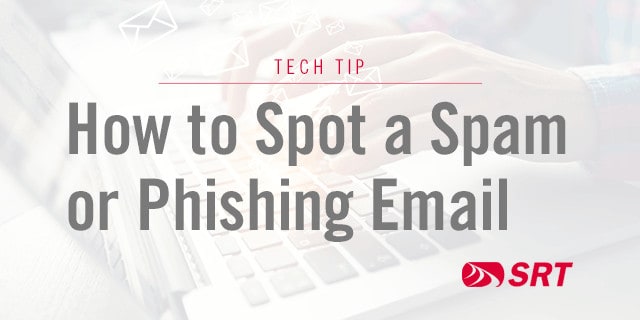
Bad actors are getting good at making emails seem realistic and tricking unsuspecting people into clicking malicious links or opening infected documents. Often, phishing emails will have a company logo, and at first glance, seem quite realistic. However, there are some simple things to do when opening an email that can save you time and stress in the long run.
1. Check the sender address: hover over the from address to see if the email is who it says it is. A quick Google search will often provide you with what the legitimate email address should be.
2. Look for grammatical errors: legitimate companies are less likely to have grammatical errors as opposed to someone posing as a legitimate company.
3. Check the salutation: If you receive an email with a generic salutation such as “hello sir/madam,” or “hi dear,” it is likely to be a scam. Legitimate companies will have your name on file and are unlikely to address you as dear.
4. Check for urgency: If an email is flagged or the subject line includes words like “urgent, time-sensitive, immediate action required” it is likely not a legitimate email.
5. Question the need for credentials or personal information: Rarely will a legitimate company or agency request personal information through an automated email. If you are requested to provide personal credentials, it is best to call a verified company phone number and confirm the request.
6. Watch for documents or links: If there are documents or links to open documents within an automated email, it is unlikely to be legitimate. Think critically about whether an attached document seems reasonable given the type of email.
7. Think critically: Some bad actors are trying so hard to fool unsuspecting people that they don’t think to ensure you utilize the service or company they are pretending to be. For example, you receive an email from someone claiming to be from Netflix and you panic and open the link. However, you didn’t even stop to remember you don’t have a Netflix account. Something as simple as knowing you do not use the service or business can save you from opening a bad link. However, if you do have an account with the company and you receive an email from, it is always best practice to give them a call and verify. Companies will always be happy to clear up any misconceptions and set your mind at ease.


